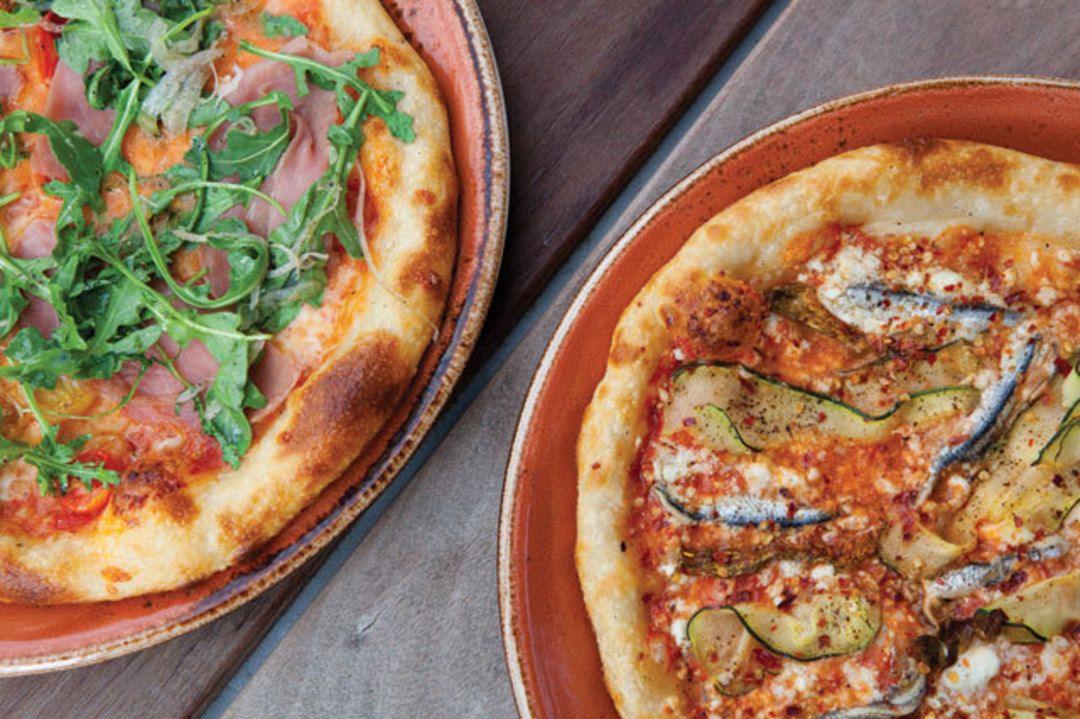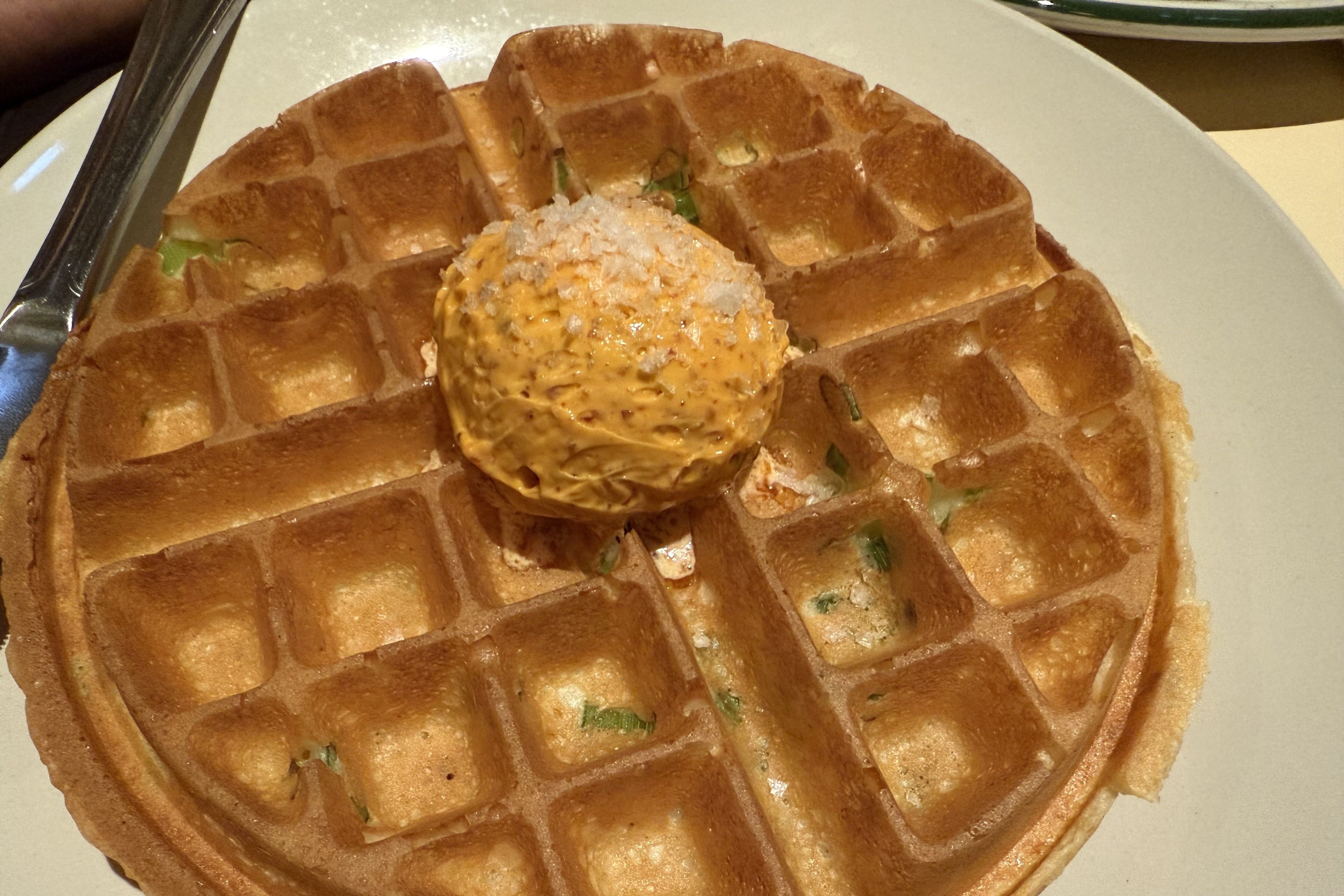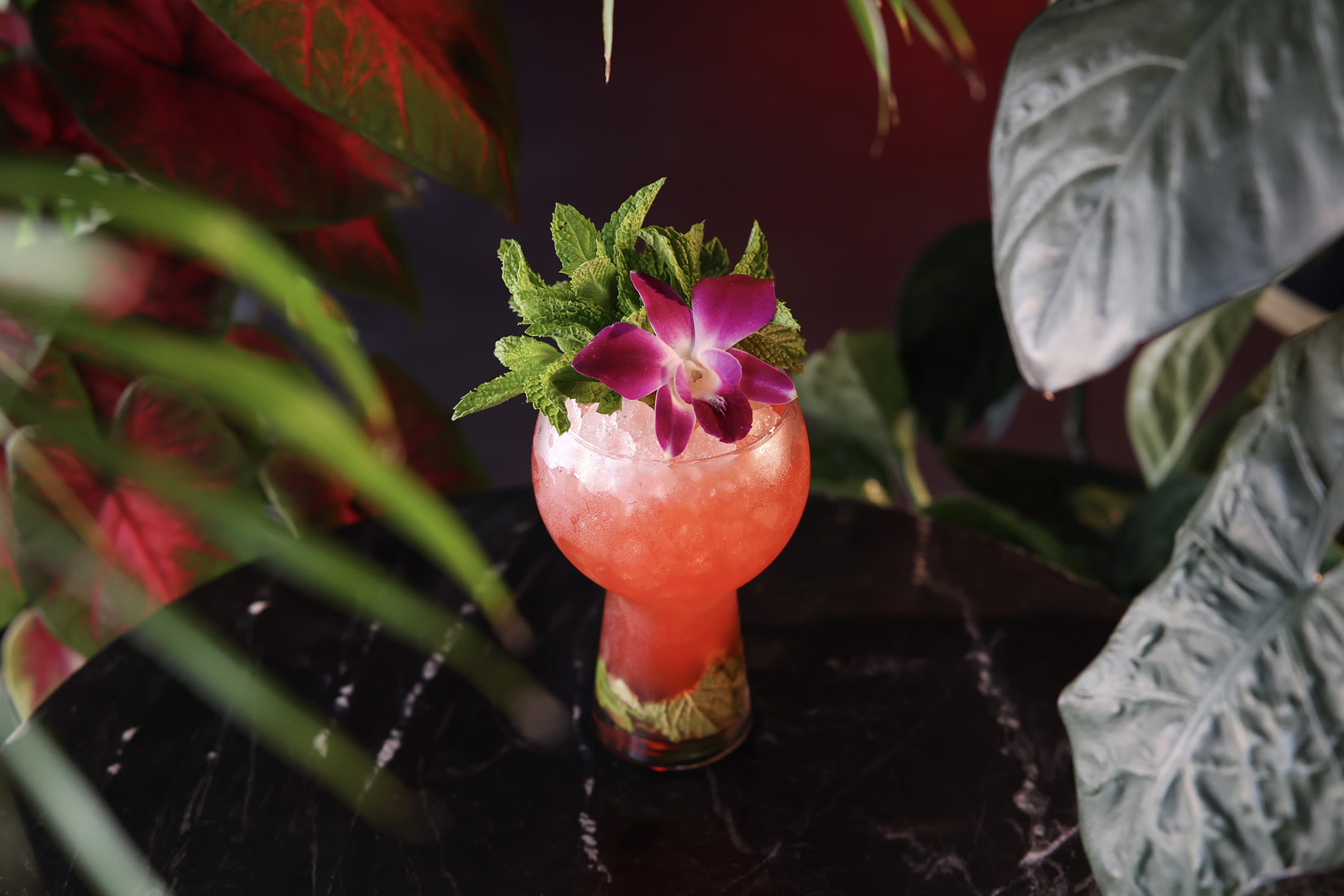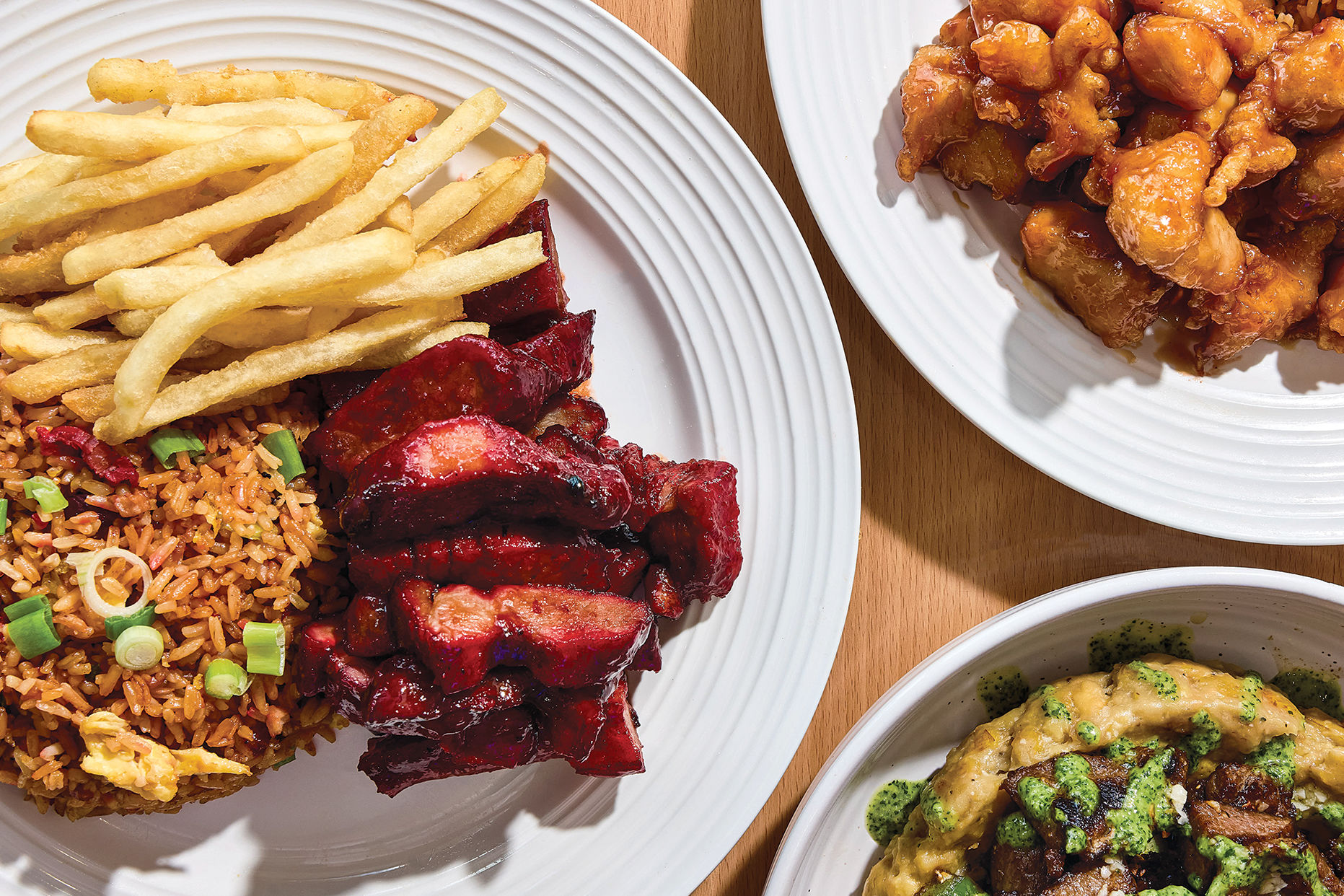Review: Osteria Mazzantini Brings Sophisticated, Modern Italian to Houston

The best seat in the house, when the weather’s good
Image: Shannon O'Hara
Osteria Mazzantini
2200 Post Oak Blvd.
713-993-9898
osteriamazzantini.com
View Listing
Sitting on the patio of Osteria Mazzantini, the much-acclaimed new restaurant on Post Oak Blvd. near the Galleria, we felt like we were having lunch at a café on some Italian piazza. The sunny, breezy weather was perfetto, the bella gente were all around, and the food? Fantástico.
John Sheely, who has been quietly knocking them dead at Mockingbird Bistro for over a decade, is also the chef/owner here. The Mazzantini name comes from Sheely’s maternal grandmother, while an osteria is a humble sort of Italian eatery that specializes in wine and simple local foods. Before the restaurant opened last summer, there were rumors that the menu would include some Mazzantini family recipes among a collection of homestyle Italian classics. But when Sheely hired his executive chef, Paul Lewis, who was born in England and trained at Four Seasons restaurants all over the globe, that plan went out the window. The modern Italian menu and wine list here are among the most sophisticated in the city.

Osteria Mazzantini’s chef Paul Lewis
Image: Shannon O'Hara
As such, Mazzantini boasts a formal dining room with white china and gleaming crystal as well as a more casual, bright, airy bar, but since the weather was cooperating, we couldn’t resist dining al fresco amid the huge potted plants and orange umbrellas of the patio.
Lunch began with a glass bowl of chicken-and-duck-liver mousse topped by a shimmering layer of balsamic jelly, a little mound of bright-yellow, zesty citrus jam, and a few verdant sprigs of watercress. Brushing past the “too pretty to eat” discussion, my tablemate and I dug into the rich, creamy liver pudding, and before we knew it, we were scrubbing the bowl with toast points.
I’d hoped for a repeat order of a simple but unforgettable wild mushroom pizza I’d had on a previous visit to the bar, only to discover it was no longer on the menu. Our second choice was a Napoletana pizza with black olives, garlic, and delicate white anchovies—and I quickly concluded that I liked the heady combination of flavors on this fishy, garlicky pizza even better than the mushroom pie.
We also shared lumache, a snail shell–shaped pasta, black with squid ink, that was tossed with shrimp, squid, and fava beans in a Day-Glo–orange saffron sauce. After one bite, my dining companion, Paul Galvani—a food writer and marketing executive for a rice and pasta company—pointed out that the pasta was “a tad underdone.”
Nobody likes overcooked pasta, but Mazzantini’s kitchen often errs in the other direction (the ravioli stuffed with sweetbreads I had on another visit was as tough as cardboard, which is a shame, because the filling is delicious). But in the case of the lumache, the solution was simple: we allowed the piping-hot bowl of pasta to sit for a while until the shells softened to al dente. Slowing down our frenetic pace of eating was a good idea anyway. That lunch on the patio was one of the most enjoyable I’ve had all year.
First and foremost, an Italian osteria is place to drink wine—not the fancy wines featured at an enoteca, but quaffable, more affordable ones. Mazzantini’s clever wine list includes many eccentric, accessible wines available by the bottle, the glass (six ounces), and the half glass (three ounces). At my first dinner there, my wife and I sat—again on the patio—and enjoyed a stunning bottle of bold, pink nebbiolo rosé, which turned out to be the star of that dinner.
Because of its crisp acidity and hint of tannin, the rosé was recommended as a perfect match for the chicken cacciatore and red snapper entrées we’d ordered. Not only did it make a pleasant dish out of an otherwise pedestrian chicken in tomato sauce, it made the unremarkable fish vastly more enjoyable.
{page break}
Pizzas topped with prosciutto and arugula, or squash blossom and anchovy: selections from the seasonal menu
Image: Shannon O'Hara
Italian menus are often organized into three courses: antipasti (appetizers), primi (pastas, risottos, and other such dishes), and secondi (entrées). After eating my way across Italy a few times, I came to a conclusion that many Americans share: skip the secondi. While the antipasti and pasta dishes of Italy never cease to amaze, the well-done veal, roasted chicken, or plain whole fish typically served as the main course tend to disappoint. I’ve decided Mazzantini is authentically Italian in this regard. The dishes I’ve liked least were the entrées I tried, while nearly every appetizer, pizza, and pasta dish has been excellent.
There are three menus at Mazzantini, each quite different, which forces the thoughtful eater to strategize. Dinnertime brings the most entrées, but it doesn’t have any of the fantastic pizzas. The lunch menu features pizza and a few entrées, but doesn’t include the osteria’s best appetizer—the amazing cauliflower sformato. That’s on the bar menu.
About that app: Mario Batali cooked a rustic version last year on TV, but Osteria Manzzantini has taken the dish to the next level. The light, soufflé-like flan is stunning, but it’s what’s underneath it, the rich cauliflower crema, a sort of creamy soup, that makes Mazzantini’s appetizer unique. I wish it were on all three menus. Thankfully, there is some menu crossover. You can get their unusually meaty pasta carbonara—for my money the best in town—at both lunch and dinner, a winning combination of pancetta and guanciale, eggs, Parmesan cheese, and bucatini for a twist on the classic dish.
On my second and final visit to the dining room, for dinner with my wife, we dove a little deeper into the restaurant’s list of hand-picked wines. Seated next to the impressive temperature-controlled, glass-walled wine vault in a corner of the quiet dining room, we skipped the secondi this time and went with two antipastis, two primis, and four half-glasses of wine.
We drank a melony Arneis with our delicate fava bean and pecorino salad; a rich, sweet, pruney “Ripasso” with our lamb and golden raisin meatballs; a biodynamic Alsatian white blend with light and creamy risotto with squash blossoms, zucchini, peas, and truffles; and a dense, purple, peppery Lagrein with our sausage and clam linguine. The four wines we sampled came from bottles in the $45 to $70 range, but our half-glasses set us back only $6 or $8 each. So for under $30 a person, we were able to taste four outstanding wines that we might never have had a chance to savor otherwise, all matched perfectly with the overall excellent dishes.
Osteria Mazzantini feels like three different restaurants, each with its own appeal. But regardless of your seat or the menu, a pleasant surprise is probably in store. Of the several new upscale Italian restaurants that have opened recently in Houston, it’s Mazzantini that’s most in touch with that country’s modern cuisine, a cuisine that, judging by the eatery’s success, Houston is more than ready for.




